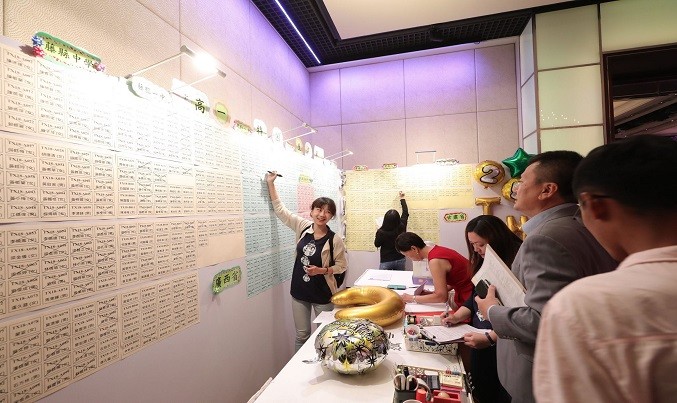It returned to my mind of an experience I came across last summer when I was being invited to an annual fundraising gala dinner hosted by a charity. It's a 10+ year local organization which devoted to support underprivileged teenagers in rural areas of mainland China to complete their high school education. What a wonderful and meaningful undertaking by a large group of passionate individuals, some of them whom I spotted there were celebrities or highly successful business leaders in town; who make donations to fund those teenagers' school fee and supplies all the way till they graduated from high school. The organization brought around thirty graduated beneficiaries, or they called them alumni; from their hometown somewhere in rural China to the event in Hong Kong in sharing of their joy of having the chance in receiving formal education, updating their latest accomplishment and revealing of their plans in life, mingling with their sponsors and expressing gratitude. I can surely see the hope and future in the eyes of these very bright young peoples. I can't deny it was truly a very touching moment which brought tears to my eyes. More than once, I was preparing to sign up to be a donor too but something struck me right at the very same moment. It was the way in which they present the beneficiaries to their potential sponsors that made me feel hundred percent uncomfortable with. There was a counter set up by the entrance to the banquet hall where information of newly recruited teenagers was available, but what I saw there shocked me and stopped me instantly. On the counter were folders over folders containing detailed profile of each new recruit, which included not only their photo, name, age, gender but also the village they lived in, names of their parents, number of members in their household, annual income, source of the family's major income, the reason of which the family are in poverty (might it be illness of one or both of the parents, disabilities, parents being laid off or whatever other explanations), the kid's academic result where a reference number was assigned to each of them. Meanwhile, a lot more similar profiles were put up on the wall behind the counter. Supporters flipped through these portfolios to find their ‘ideal' sponsee(s). Donation payments were made by cash or credit cards straightaway once a sponsee was identified. As soon as the transaction was done, there were rounds of cheers and applauds among volunteers manning the counter while MC would announce from time to time of how many of the teenagers were being funded successfully and how many were remaining open and hence urging donors to keep opening their purses. On this occasion I must admit the whole scene gave me an impression that I was in effect witnessing a round of slave auction or human trafficking instead. I'm sorry but I really can't stop having such a feeling in my mind throughout the whole event that evening.
I appreciate they are indeed doing good sincerely with big hearts but the concern is that the presentation format was arguable. Are there any other ways of presenting beneficiaries professionally and decently? Definitely yes! There are countless charitable organizations either locally or internationally doing a very good job of presenting the beneficiaries. For example, ORBIS and Save the Children; identifies one particular child as the poster child for each campaign and feature him/her (in most cases it is her) in relevant publicities. Through sharing such specific stories, prospects would get an overall sense and empathic feeling towards other kids in similar situations in the same community that encourage them to make a gift to support children being enveloped by the campaign, to avoid ‘selling' each of the beneficiaries individually. Take World Vision Hong Kong's Child Sponsorship campaign as another example. Although they are matching donor's fund with a specific beneficiary, donors have no option in making their request for a specific demographic type of beneficiary to prevent giving the wrong impression of ‘auctioning' a particular one. Habitat for Humanity's building projects allow donors not only making donations but also helps in home building for benefiting families, but donors will have no chance in knowing in advance of which family they are helping until they arrived at the build site and rolled up their sleeves to work side by side with beneficiaries.
What do these or other similar examples have in common? First, in many cases, these organizations are not pitching each beneficiary individually but a cluster of those who shared a similar story/situation. On the other hand, when they are doing so, they are targeting on donors individually, i.e. through emails, direct mailings, website, street fundraisers or other platforms; rather than a large group of them simultaneously. Likewise, they are not doing donor/beneficiary matching publicly. Everything was done behind the scene so that donors are not ‘competing' with one another. Last but not least, they protect the privacy of beneficiaries by revealing very minimal information upfront and sometimes even throughout the whole donor journey. Consider people are normally having the higher ethical expectation on charities, it is no doubt necessary for us to think a bit more in every move, every decision we made in avoid embarrassing ourselves or worse demoting of our organization and the cause that we are tackling.











